Gardening is a relaxing and rewarding activity, but it can also be a little frustrating, especially if you are convinced that reciting poetry will encourage your roses to bloom. This amazing hobby is often passed from generation to generation. Our grandparents loved gardening, our parents love gardening, and slowly but surely, we’re starting to like gardening as well, which is awesome. But it can lead to some confusion in terms of ‘secret techniques’ and ‘essential advice’. To prevent you from feeling silly and from harming your beloved plants, we’re going to debunk some of the most common gardening myths.
Read on to learn the truth about bad-smelling compost piles, coffee grounds, banana peels, and more.
Myth 1: Eggshells can prevent blossom-end rot
Reality: Eggshells are not particularly effective when it comes to blossom-end rot

It is commonly believed that the main reason behind blossom-end rot is a calcium deficiency, and there is some truth to the idea. During their growing season and while they develop fruit, tomato plants need to absorb a lot of calcium. But adding eggshells or other amendments to the soil will not help the plants absorb calcium. In fact, this nutritional deficiency is more often than not caused by under-watering. Tomato plants need a lot of water to grow healthy and happy, so, if you notice blossom-end rot, you should first ask yourself if your tomatoes are getting enough water.
In general, garden soils provide sufficient calcium for tomatoes and other plants to thrive. But sometimes, the soil might not have enough calcium, especially if it is particularly acid. If the pH of the soil is between 6.5 and 7.0, you don’t have to worry about calcium levels. And besides, if the pH levels are too low, adding eggshells won’t do anything to correct the high acidity. The right solution for acidic soil is lime, which will also balance the calcium levels in the soil.
In conclusion, eggshells won’t solve the main problems that lead to calcium malabsorption in plants such as insufficient watering and low pH levels in the soil. But they do no harm and they can raise the calcium levels in the soil and maintain it healthy.
Myth 2: Homemade detergent sprays help repel pests
Reality: Some household soaps and detergents can be effective, but they can damage the plants
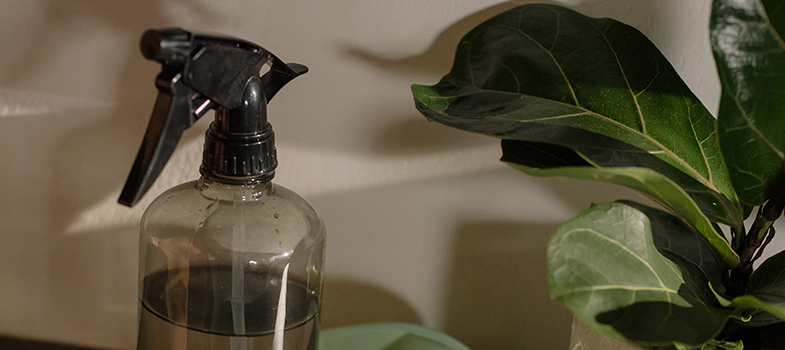
It is important to mention right off the bat that there are certain household products that can make effective insecticides. A lot of people recommend using liquid dishwashing detergents or hand soaps because they are a handy and cheap solution. However, these detergents are not designed to be used for gardening, so by using them, you risk doing serious damage to your plants. The great majority of household soaps are very harsh, which is why they can kill certain insects, but they can also harm the leaves and flowers of your plants. Another negative side-effect of using regular detergent as pest repellent is the fact that it might harm other beneficial insects such as ladybugs or predatory mites (which help control spider mites).
A much better and risk-free option is using insecticidal soaps. You can find them in the gardening section of any store and they have plenty of benefits including being safe for plants, only affecting pests without harming other insects and wildlife, and being more effective than regular soap. But regardless of what type of insecticidal soap you decide to use, make sure you mix it with water as recommended by the manufacturer.
Myth 3: Talking to plants will help them grow
Reality: Studies have shown that plants do respond to sound
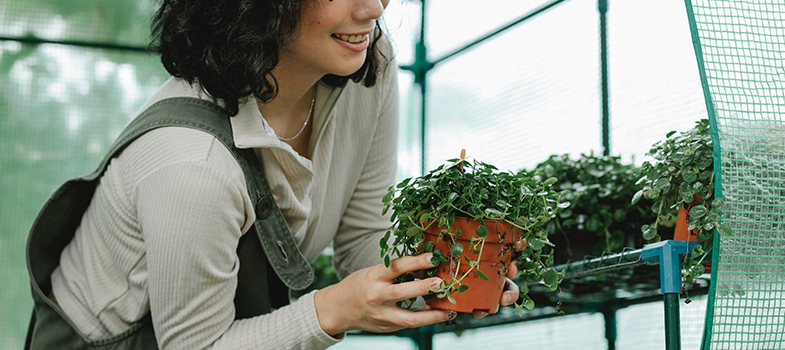
For hundreds of years, people have been fascinated by the idea that talking to plants can contribute to their growth. Therefore, numerous studies were conducted whose focus was the influence of sound and vibration on plant growth. In most cases, scientists reached a similar conclusion – plants do respond to sound because the sound is essentially vibration. This means that wind can have a similar effect.
Study
According to the International Journal of Environmental Science and Development, different types of music have different effects on plants. The study exposed Rosa chinensis plants to four different types of music: Rock music, Western Classical, Vedic chants, and Indian Classical, and some were exposed to the old classic silence. After 60 days, it was found that The Vedic chants produced the most growth, followed by Indian Classical music. As interesting as this might seem, it’s quite unlikely that the plants had developed musical preferences. Instead, these growth differences might in fact be caused by the number of decibels and by the vibrations.
A 2016 study has shown that the number of decibels is quite important. Music played at 70 decibels proved effective, which as it happens, produces a similar amount of noise as a regular conversation. When it comes to seed germination, however, plants respond to a minimum of 92 decibels. So you might want to sing a little louder during your plant’s germination process.
But why do plants respond to sound? Well, as mentioned above, they actually respond to vibration. Some scientists think that this is a survival mechanism that plants have developed and that helps them survive strong winds. So, plants that are exposed to vibrations think that they need to become sturdier to withstand their current environment. But, regardless of how nice your singing voice is, your plants will always do just fine without any additional noise. Plant growing will always depend on temperature, light, water, and nutrition, so make sure your plants get these essential things instead of listening to gardening myths and misconceptions.
Myth 4: You have to change the potting material each year
Reality: Not necessarily. In most cases, you can change the potting soil less often than that
Worried that your plants might not get sufficient nutrients in their current potting soil for more than a growing season? We have good news. In most cases, plants will do just fine in the same potting soil for at least two years. To be 100% sure that your plants are getting all the nutrients that they need, you can simply add some new compost every year, and this will encourage growth and provide them with everything they need.
Now, it is important to mention that in certain situations, reusing potting soil is not an option. For instance, if you’re growing flowers, reusing the soil is not a problem. But, if you plan on growing herbs or veggies, you will need fresh soil. The rule here is not to reuse soil if you’re changing the type of plants that you are growing. Different plants have different needs, and they will absorb certain nutrients and moisture from the soil, so reusing soil can be tricky. The best thing to do is to keep flowers in soil that was used for flowers only, and veggies in soil that was used for veggies.
Another thing to consider when it comes to changing or reusing potting material is its general condition. If the soil has a bad smell or if it has developed fuzz, fungus, or other visible problems, all you can do is to throw it away and switch to fresh soil. To protect your new plants from diseases and pests, avoid planting them in the same soil in which other plants have died or withered.
To sum up, you can leave your plants in the same potting material for more than one year, but you should be cautious about reusing your potting soil.
Myth 5: You should add gravel to the bottom of potted plants
Reality: Adding gravel to the bottom of potted plants has no benefits and is not recommended

You might think that adding a handful of gravel at the bottom of your pot will improve drainage and prevent overwatering/waterlogging. This, however, is nothing but a common gardening misconception. Not only will gravel not encourage water from draining, but it will also take up a lot of space. And you don’t want gravel to occupy the space that your plants’ roots need to grow and to develop. If you want to ensure that your soil drains properly, you can simply mix it with some coarse sand or perlite. Don’t just listen to gardening myths.
Myth 6: Adding sugar to soil makes fruit sweeter
Reality: Sugar in the soil will not make fruit taste sweeter
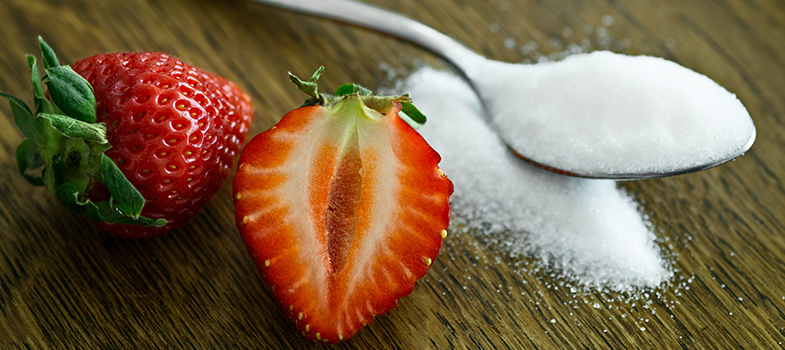
We’d love for this myth among all other gardening myths to be true because then it would be so much easier to produce delicious fruit. Unfortunately, adding sugar to the soil won’t have any impact on the sweetness level of the fruit. In both fruits and veggies, the sweetness is determined by the amount of sun that they receive and their genetics.
So, if you want to produce sweet tomatoes, you need to choose the right cultivar from the get-go. Cherry tomatoes and beefsteak tomatoes are great options. Also, make sure the cultivar of your choice will thrive in your climate and that your tomatoes will have plenty of time to ripen, will get lots of sunlight, and nutrient-rich soil.
Myth 7: Newly planted trees need to be staked
Reality: Staking is not recommended unless the trees are growing in sloping terrain or in a windy area

Many people were and still are convinced that staking is a must when it comes to helping a newly planted tree develop properly. However, this practice is not as beneficial as you might think. In fact, staking a tree can prevent it from growing naturally as strong as it should. Trees are quite amazing and sometimes we need to take a step back and let them do their thing. So, unless you are planting young trees in a windy location or on a sloped site, there’s no need to give them extra support. A little bit of wind will encourage the tree to develop a strong root system. A stake, on the other hand, will act as a crutch and the tree will remain frail.
To sum up, don’t stake the newly planted trees unless you absolutely have to. In which case, make sure you tie the tree as loosely as possible, with a t-shirt or other soft fabric that won’t damage the bark. Steel wire is a big no-no as it can cause serious damage to the tree. Gardening myths will only to do harm to your tree!
Myth 8: Water left on leaves can result in sunburn
Reality: This is very unlikely because the water drops evaporate quite quickly
If you were worried that watering your garden at noon might have awful consequences such as burnt leaves, we have good news. Even on hot summer days, the rays of the sun are not powerful enough to cause sunburn. Furthermore, in hot weather, the water drops will probably evaporate in a few seconds. If the combination of water drops and sunshine had such terrible consequences, imagine the losses that farmers would have to deal with after a summer rain. Also, lawn sprinklers wouldn’t be a thing.
All in all, you don’t have to worry about your plants suffering sunburn due to water drops. But even so, there are many benefits associated with watering your garden in the morning. If you are an early bird, your plants will have more time to absorb the water before it evaporates, you get better water pressure, and you reduce the chances of foliar disease.
Myth 9: Adding sand can improve clay soil
Reality: Sand will only make clay soil heavier
Adding sand to clay soil is ineffective and it can actually make the soil worse. Weirdly enough, a little sand can turn your clay soil into a mortar-like substance that would be quite inhospitable for plants. A better way to loosen your heavy soil and improve its nutrient quality is to add compost or other types of organic matter.
It is worth mentioning that the combination of sand and clay soil isn’t always bad. For instance, a little clay can be added to sandy soil to change its mineral composition.
Myth 10: Drought-tolerant plants don’t need watering
Reality: All plants need water, but drought-tolerant plants need less
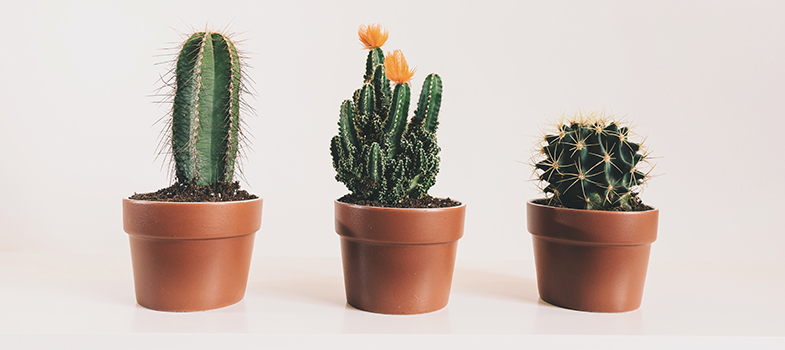
Succulents and cacti are great examples of drought-tolerant plants, but it’s important to remember that they still need to be watered every once in a while. The thing about drought-tolerant plants is that they can survive without water for certain amounts of time. Some species of cacti can survive without water for up to two years. But that certainly doesn’t apply to all species of cacti. Young plants will always require more water than adult ones and it’s recommended to choose the watering schedule based on the surrounding environment and on the type of plant that you are growing.
Overwatering is a big problem when it comes to drought-tolerant plants. To avoid this common mistake, apply the ‘soak and dry’ method when watering your plants. This method consists of giving your plants a good soak only when the soil is completely dry.
Myth 11: Add banana peels to roses for a boost
Reality: Banana peels can be added to the compost pile, but should never be buried directly into the soil
We all know that bananas are a great source of potassium, and we’re not the only ones who need it. Roses, and pretty much all garden plants, need potassium to produce their beautiful flowers and to grow healthy and happy. But burying banana peels is not a good way to stimulate our garden companions. In fact, doing so might actually have a negative impact because the microorganisms that start feeding on the banana peels will consume a lot of nitrogen from the soil. This might cause our plants to suffer from a nutrient deficiency.
But what is the best way to use bananas if we really want to give our roses a potassium boost? The answer is – compost. By adding the banana peels to a compost pile, they have plenty of time to break down before reaching our plants. This way, we successfully avoid falling for this type of gardening myths mentioned above.
Myth 12: Add coffee grounds to shrubs that love acid soils
Reality: Not recommended. Adding coffee grounds can lower the soil’s pH but it can also lead to a nitrogen deficiency

This situation is quite similar to the one with banana peels. Burying organic matter in the soil is never a good idea because the decomposing process can lead to a nitrogen deficiency. While it is true that coffee grounds are acidic and can lower the pH over time, their decomposing process can also prevent your plants from growing.
But don’t worry, there are other effective ways to lower the pH in your soil without doing any damage to your plants. For instance, you can opt for an acidifier that is sulfur-based. You can probably find it in any gardening store or section. Read the label carefully before adding it to your soil and keep in mind that a lot of shrubs love acidic soil. So, if you are growing blueberries, rhododendrons, azaleas, magnolias, etc. make sure you check your soil’s pH. Don’t follow gardening myths blindly.
Myth 13: Compost piles are meant to smell awful
Reality: If properly worked, compost piles don’t smell bad

A lot of people complain about the awful smell of their compost piles, but that’s usually owed to the fact that they are trying to ‘compost’ the wrong things. Correctly formed compost piles should have a nice, earthy smell. Anaerobic composting is also something to be avoided because it can turn your compost slimy and this will lead to a foul, swampy smell. The right composting technique consists of oxygenating the pile by turning it regularly. Adding leaves and soil is another way of avoiding slime and bad smells.
So, you shouldn’t be worried that a compost pile comes along with a bad smell. As long as you do it right, composting is a clean, safe, and fun way to keep your soil healthy.
Myth 14: To avoid thatch, don’t leave grass cuttings on your lawn
Reality: Grass cuttings are completely safe and they don’t become thatch
If you have a nice lawn, then you’ve probably been a victim of this common misconception. Although it’s been passed from generation to generation, the idea that grass cuttings will ruin your lawn and prevent it from growing is nothing but a hoax. In truth, grass clippings can actually be useful if left in place, as they are a great source of nitrogen. If you have a mulching mower, even better.

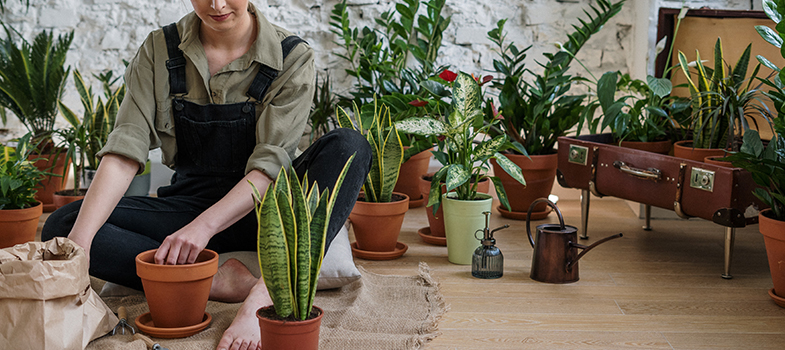

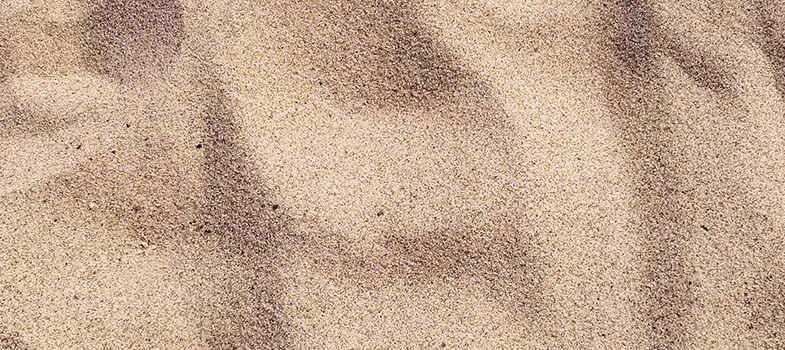
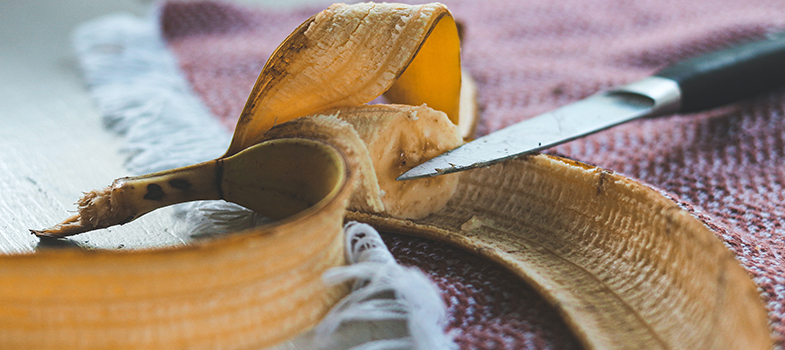

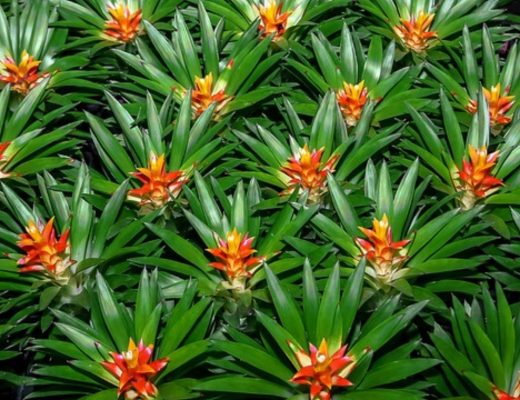
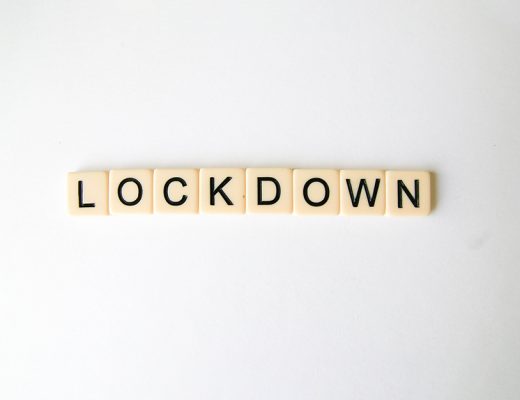
No Comments